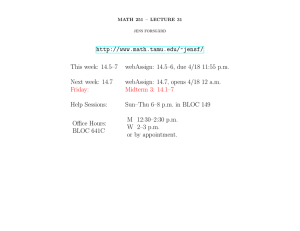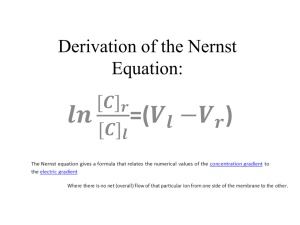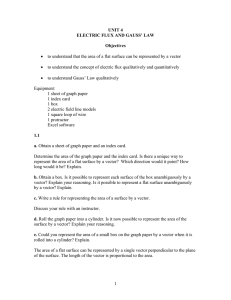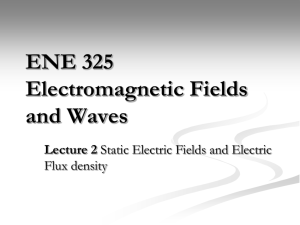Dot Product Exercise c - Rose
advertisement
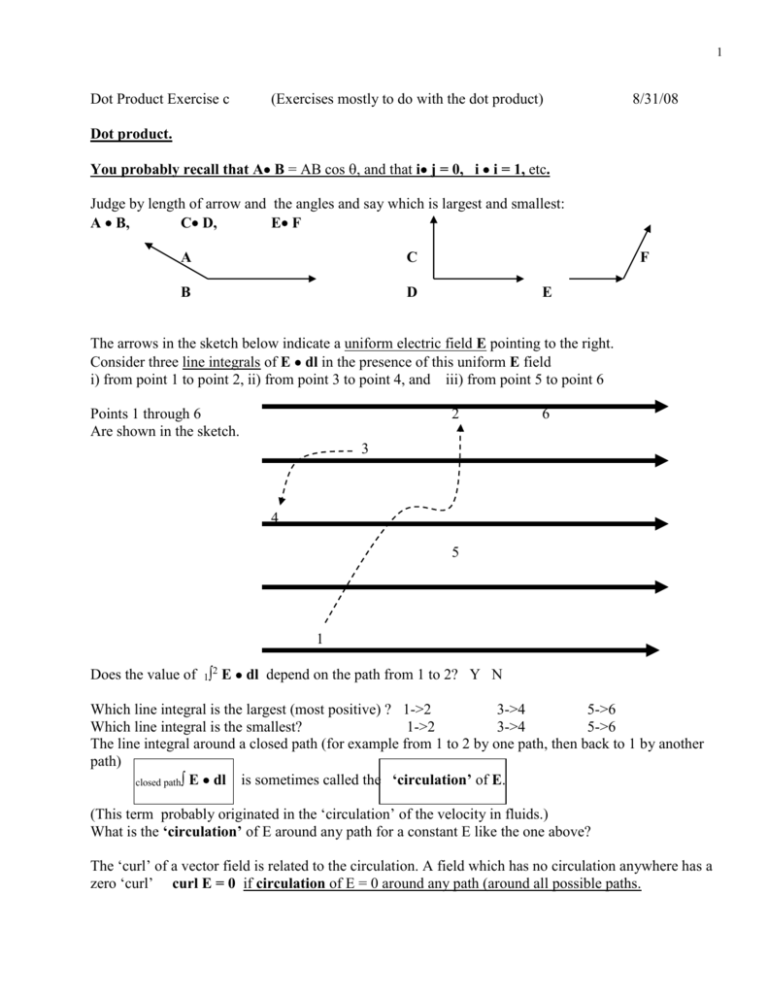
1 Dot Product Exercise c (Exercises mostly to do with the dot product) 8/31/08 Dot product. You probably recall that AB = AB cos , and that i j = 0, i i = 1, etc. Judge by length of arrow and the angles and say which is largest and smallest: A B, CD, EF A C B D F E The arrows in the sketch below indicate a uniform electric field E pointing to the right. Consider three line integrals of E dl in the presence of this uniform E field i) from point 1 to point 2, ii) from point 3 to point 4, and iii) from point 5 to point 6 Points 1 through 6 Are shown in the sketch. 2 6 3 4 5 1 Does the value of 12 E dl depend on the path from 1 to 2? Y N Which line integral is the largest (most positive) ? 1->2 3->4 5->6 Which line integral is the smallest? 1->2 3->4 5->6 The line integral around a closed path (for example from 1 to 2 by one path, then back to 1 by another path) closed path E dl is sometimes called the ‘circulation’ of E. (This term probably originated in the ‘circulation’ of the velocity in fluids.) What is the ‘circulation’ of E around any path for a constant E like the one above? The ‘curl’ of a vector field is related to the circulation. A field which has no circulation anywhere has a zero ‘curl’ curl E = 0 if circulation of E = 0 around any path (around all possible paths. 2 Fun fact: any vector which is purely radial (no tangential components) has zero curl. 'Flux' of a vector. The flux of a vector V is an integral over some surface S. The flux (often denoted by the symbol involves the dot product of V with an area element da 'flux' of V = SV da The surface S can be closed (enclosing a volume, like a cube or a sphere), or open. For a closed surface, the area element da always points out of the volume, away from the interior. If we think of a vector field as some number of lines per unit area (for example, tesla = webers/m2), then the flux is the net number of lines entering or leaving the surface. For a closed surface, the flux of the magnetic field B is always zero, with as many lines entering as leaving. That's because B lines curve back on themselves, with no beginning or end. For any closed surface, every B line which enters, also leaves. The flux of electric field over a closed surface may also be readily interpreted as the net number of lines leaving. As we will shortly see, the number of hypothetical electric 'lines of force' leaving a positive charge Q is proportional to Q, and the net flux of E through a closed surface tells us the net charge inside that surface (Gauss's law.) Consider a uniform vector V which points only in the x-direction. We would like to calculate its flux over a hemisphere of radius R, as shown in the sketch. V 2R This is a 'closed' surface, enclosing a volume. Calculate the flux of V through the flat surface. This should be quick. Faraday and lines/area. k = 9 x 109 Nm2/C2 Coulomb’s law: F12 = kqq’/r122 force between q and q’ at a separation r12 k = 1/(4o) E due to q = F12/q’ (small q’) = kq/r2 E field at a distance r from a point charge q Faraday took the electric field strength to be the number of field lines per unit area. This works out just fine when we assign 4k lines per coulomb of charge. (4k = 113 billion lines/coulomb). For a point charge +q, we have 4k q lines leaving the charge. If there are no other charges around, these field lines terminate on negative charges at infinity. At a distance r from the point charge, the area is 4r2. The lines per unit area are then Lines/area = (4k q)/( 4r2) = kq/r2 .

